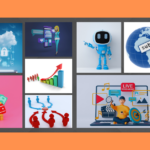Why in the world would you give your product away for free? At first glance, it seems dumb, doesn’t it? Loads of people come to your platform, sign up, use the products you spent thousands of hours designing, and then they leave. And you never hear from them again.
Luckily, that’s not how it happens. Unless your product sucks. Then it does happen like that.
So, should you offer a free trial or not for SaaS products? Let’s use Salesforce as an example. It’s a bit of a cop-out, but that’s fine for this example. Salesforce is a household SaaS name. It offers a free 30-day trial.
Salesforce Q4 earnings were off the charts – hitting $9.25 billion….for the quarter. That free trial doesn’t seem so crazy now, does it? Unless you think making money is crazy. And if that’s crazy, we don’t want to be sane.
The question of offering a free trial can be as polarizing as pineapple on pizza. Every SaaS company must grapple with the decision of whether unfurling the red carpet comes at an unnecessary cost.
Here are the pros and cons that could take your free trial and turn it into billions. Free trial or not in 2024? You’re about to find out.
Table of Contents
Free Trial or Not for SaaS in 2024
Launching a free trial can feel like giving away the farm. Yet a strategic rollout can be akin to throwing breadcrumbs to birds that may flock back in droves.
But that doesn’t really answer the question. Free trial or not for SaaS?
The honest answer is that the payoff for free trials is tangible, especially in customer onboarding and product education.
But, the downsides bear scrutiny. Free users do not guarantee paying customers. Sometimes, they might even strain your operations without a solid conversion strategy.
The key lies in understanding your product’s perceived value and balancing it with introducing a free tier.
The Pros:
- Customer Experience: A trial can integrate the product into the customer’s daily routine, making it an indispensable part of their workflow.
- Conversions: The more time customers spend on your product, the more it becomes a habit — and the harder it is to leave.
- Market Adoption: A free trial can offer a low-commitment entry point to attract prospects considering your solution. For more information on this topic, check out our post on SaaS adoption rates.
- Analytics: The trial period can provide invaluable usage data that can help you improve your product and flag churn risks.
The Cons:
- Conversion Costs: The expense of endowing a free trial, including customer support and infrastructure, can dent profitability.
- User Expectations: If your free tier doesn’t align with the customer’s needs, the entire trial could be a wasteful exercise in futility.
- Churn Rate: A poorly executed free trial can mislead brands with high engagement but little intent to convert.
Dead Horse? Never! – Know Your Audience
Conducting market research, A/B testing for SaaS, and analyzing customer feedback can provide a clear picture of your audience’s preferences for software trials.
Certain SaaS products with complex features might inherently benefit from a free trial to showcase functionality. Others with straightforward user adoption may eschew a trial in favor of faster conversions.
Assessing Your Audience:
- Demographics: Is your target market tech-savvy? Do they align with early adopters, or are they more skeptical and cautious?
- Competitive Landscape: What do your competitors offer, and how do they structure their trials?
- Consumer Behavior: Are your potential users price-sensitive? Will a free trial genuinely sway their decision-making?
Dig into the Data
Metrics don’t lie. Engage with customer data to learn the efficacy of free trials in driving long-term revenue. Customer insights paint the truest of pictures.
Build Case Studies Using:
- Conversion Rates: Compare conversion rates from free users against those who started with a paid plan.
- Churn Analysis: Did free users have a higher or lower churn rate than those who didn’t trial the software beforehand?
- LTV (Lifetime Value) Impact: Are trial users less profitable over their lifetime, even if a portion converts to paid?
Alternatives to a Traditional Free Trial
A free trial isn’t the only way to showcase your product and entice potential customers. If you don’t want to go this route, consider these alternatives:
SaaS Free Trials VS Paid Trials
- Money-Back Guarantee: Instead of a free trial, offer customers a money-back guarantee within a certain time frame. This gives them the opportunity to try the product risk-free while still committing financially.
- Demo Videos/Webinars: Use video content or webinars to showcase your product’s features and benefits, providing potential customers with a taste of what it can offer. You can even break down SaaS free trials vs paid trials to explain why you decided not to go the free trial route.
Freemium VS Free Trial SaaS
The freemium model, where a basic level of service is offered for free with paid upgrades available, may seem like an attractive alternative to a trial.
But, it’s worth considering the potential downsides as part of the freemium vs free trial SaaS debate.
- Increased Costs: Offering both a free and premium service can significantly increase overhead costs.
- Narrowed User Base: Freemium models can attract users who are not in your target market, leading to a high churn rate and low conversion rates.
- Scalability: As your user base grows, so do your costs, potentially putting pressure on profitability.
Should You Offer a Free Trial or Not for SaaS in 2024? Yeah. Probably.
While there are some drawbacks to offering a free trial, especially for a startup, you should still do it. The single biggest reason whether you should offer a free trial or not for SaaS in 2024 is this: everyone else is.
Do you really want to be the only company out there not offering one? The model itself is highly profitable. Without it, you run a pretty big risk of looking like a cheapskate.
After considering the freemium vs free trial SaaS debate and the SaaS free trials vs paid trials debate, the benefits outweigh the downsides.
A successful free trial strategy requires a deep understanding of your target audience, a solid infrastructure to support potential users, and a clear pathway to conversion to paying customers.
After writing this post, we can’t help but think anyone who reads the whole thing would love to read this one on finding customers for your product.





Hey, I’m Jack. Your blog is a game-changer! The content is insightful, well-researched, and always relevant. Great job!
We are glad to hear that you found our content helpful!